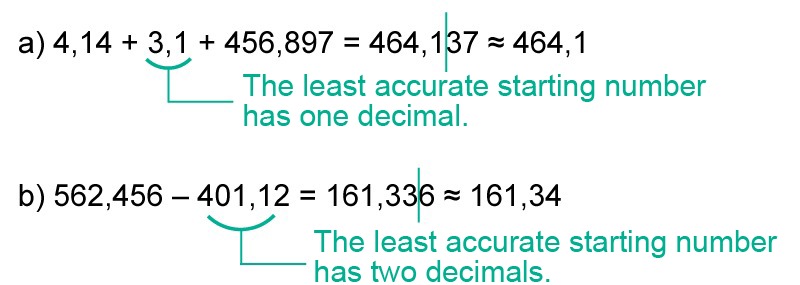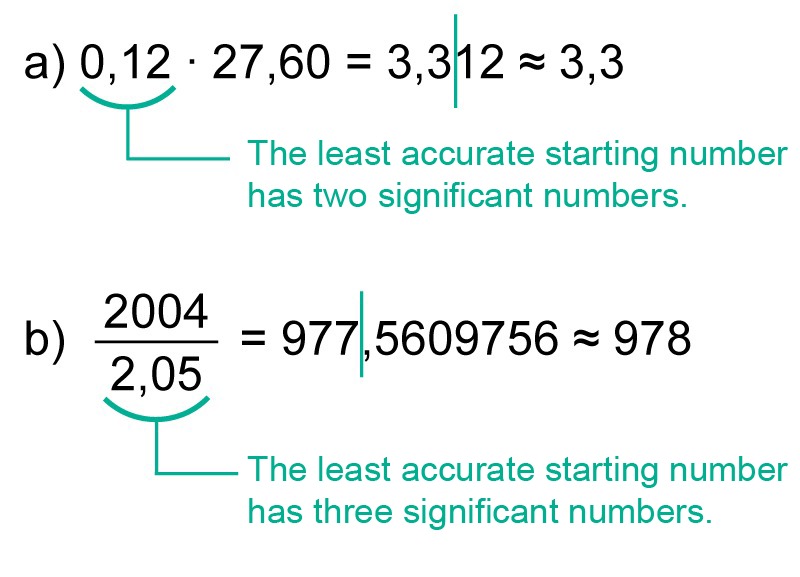2. Calculating with decimal numbers and rules for rounding
Exercises
The addition and subtraction of decimal numbers
When calculating with decimal numbers, special attention must be paid to the accuracy of the results. Otherwise, the measurements made may be inadvertently claimed to be more accurate than reality. When calculating with decimal numbers, the answers are rounded to an appropriate precision according to certain rules.
Example 1
John drives [[$ 5 $]] km from his home to the parking lot of his workplace. The distance between the parking lot and the door of the office building is [[$ 60 $]] m. From there, the distance to John's office is [[$ 15 $]] m. How long is John's commute to work in total?[[$ \text{5 km} + \text{0.060 km} + \text{0.0015 km} = \text{5.075 km} $]]
Let’s look at the meaningfulness of the answer. The length of the car trip is reported at the accuracy of the nearest kilometre. Its actual value is between [[$ \text{4.5–5.5} $]] km, in which case the total length of the way to work would be between [[$ \text{4.575–5.575} $]]km. Now, if the length of John’s way to work is reported to be [[$ 5.075 $]] km, it means that the length of his commute is exactly [[$ 5 $]] km and [[$ 75 $]] m. However, in fact, the decimal numbers [[$ 0,7 $]] and [[$ 5 $]] may be any numbers, as the distance of [[$ 5 $]] km was not given at the accuracy of meters. Therefore, the only sensible answer for the commute that can be relied upon for the accuracy of the numbers is [[$ 5 $]] km.
The addition and subtraction of decimal numbers
The answer is given with as many decimals as there are in the least accurate starting number.
Example 2
Calculate and give answers with appropriate accuracy.

The multiplication and division of decimal numbers
The multiplication and division of decimal numbers
The answer is given with as many decimals as there are in the least accurate starting number.
Example 3
Calculate. Give the answers at the appropriate accuracy.

The accuracy of answers
- in additions and subtractions, all output values must be taken at least one decimal place more accurately than the desired accuracy of the answer.
- in multiplications and divisions, all output values must be taken at least one significant figure more accurately than the desired accuracy of the answer.